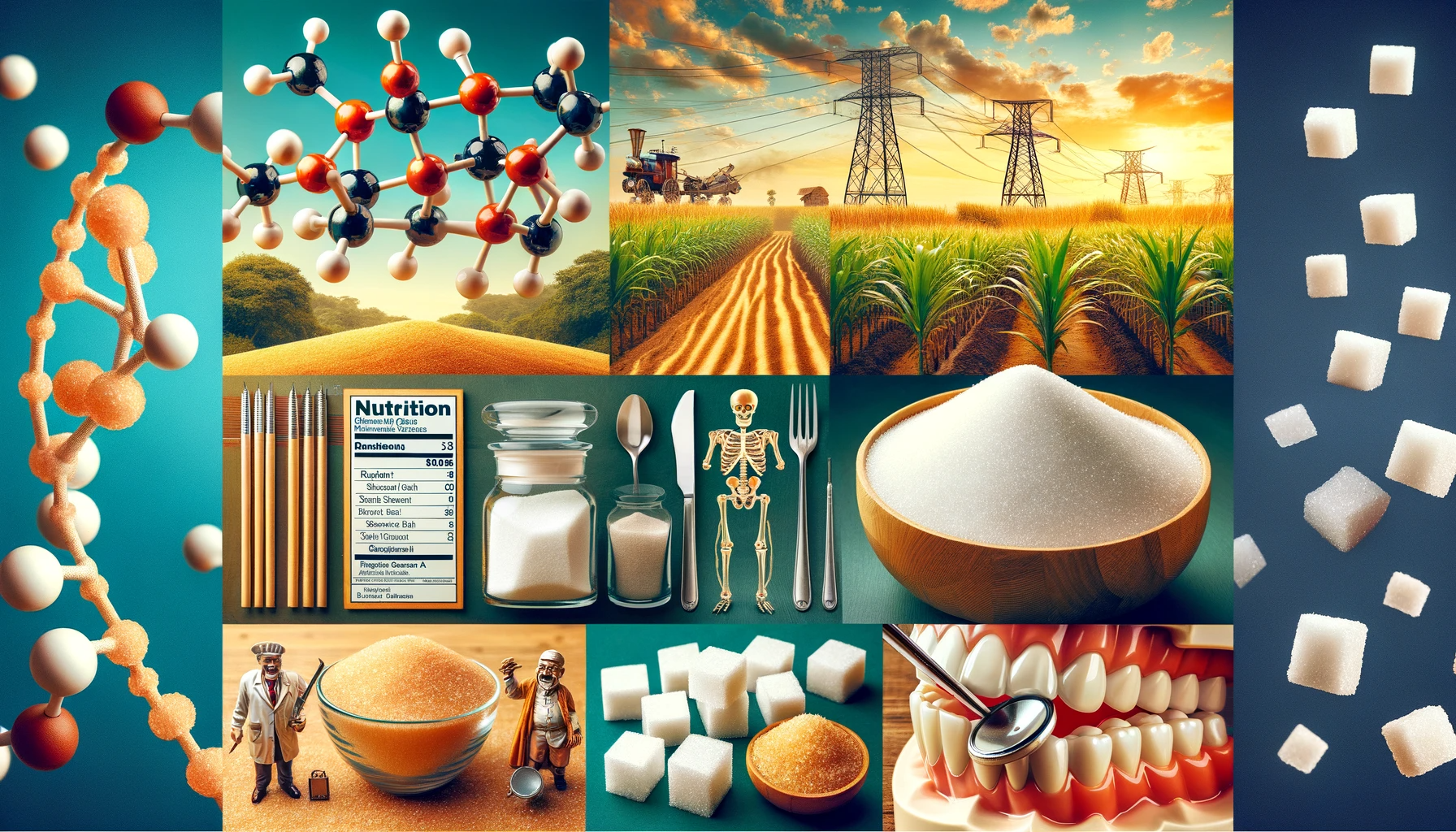Introduction
Sugar is an integral part of our daily lives, adding sweetness to our beverages and treats. But have you ever wondered about the chemistry behind this ubiquitous ingredient? In this article, we will delve into the fascinating world of sugar chemistry, exploring the essential ingredients that make sugar what it is.
The Sweet Science of Sugar
The Basics of Sugar
Before we explore the chemistry, let’s start with the basics. Sugar, in its simplest form, is a carbohydrate, classified as a disaccharide. Disaccharides are molecules composed of two sugar units, known as monosaccharides, joined together. The most common type of sugar that we consume is sucrose, which is composed of glucose and fructose.
Molecular Structure
Glucose: The Energy Source
Glucose is a monosaccharide that serves as a primary source of energy for our bodies. Its chemical formula, C6H12O6, hints at its six-carbon structure. It is crucial for cellular respiration, providing the energy necessary for various metabolic processes.
Fructose: The Natural Sweetener
Fructose is another monosaccharide that is responsible for the sweet taste of sugar. Its chemical structure is similar to glucose but arranged differently. Fructose is naturally occurring in fruits and is also found in honey.
The Sucrose Connection
Sucrose, the disaccharide we commonly refer to as table sugar, is made up of one glucose molecule bonded to one fructose molecule. This unique combination gives sucrose its distinctive sweet taste.
Extraction and Production
Sugar Sources
Sugarcane: A Sweet Revolution
The majority of the world’s sugar is derived from sugarcane. This tall, tropical grass contains high concentrations of sucrose in its stalks, making it a valuable source of sugar production.
Sugar Beets: An Alternative Source
Sugar beets are another source of sucrose. Unlike sugarcane, sugar beets are grown in temperate climates. The sugar is extracted from the beet’s roots, which contain a high sugar content.
Sugar Extraction
Once the sugar source is harvested, the extraction process begins. This involves crushing or milling the sugarcane or sugar beets to extract the sugary juice. The juice is then processed and purified to obtain raw sugar.
Refining Process
Raw sugar is further processed and refined to remove impurities and color. The end product is the familiar white granulated sugar that we use in our kitchens.
Different Types of Sugar
Brown Sugar
Brown sugar retains some of the natural molasses from sugarcane, giving it a distinct flavor and color. It’s often used in baking to add moisture and a subtle caramel flavor to dishes.
Powdered Sugar
Powdered sugar is finely ground granulated sugar, mixed with a small amount of cornstarch. It is commonly used for making icing and frosting due to its fine texture.
Liquid Sugars
Liquid sugars, such as honey and maple syrup, are in liquid form due to their unique composition. Honey, for instance, is primarily composed of fructose and glucose, making it sweeter than sucrose.
Conclusion
Understanding the chemistry of sugar enhances our appreciation for this versatile ingredient. From its molecular structure to its various sources and types, sugar plays a significant role in our culinary world. Next time you enjoy a sweet treat, you can savor not only the taste but also the fascinating chemistry behind it.
In this article, we’ve unraveled the chemistry of sugar, shedding light on its essential ingredients. From glucose and fructose to sucrose and its production, we’ve covered it all. Now, when you reach for that sugar bowl, you’ll have a deeper understanding of what makes your favorite treats so sweet.
Remember, sugar is more than just a sweetener; it’s a scientific marvel that has been part of human history for centuries.
